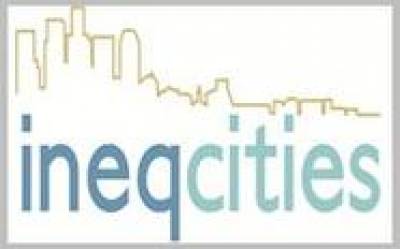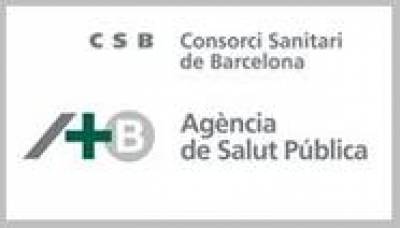Each of the following maps demonstrates the heterogeneous nature of the different neighbourhoods in the Brussels region in terms of socio-economic characteristics. These maps highlight an explicit pattern of geographical segregation; in each of the maps the most deprived neighbourhoods form a semicircle around the city centre in the North-West. The South-Eastern half of the city is marked by socio-economic affluence. Socio-economic indicators were derived using data from the 2001 Census, provided by Statistics Belgium.
The following socio-economic indicator maps are colour-coded; high concentrations of a socio-economic characteristic are represented by brown tones, which lighten as the concentration reduces. Intermediate concentrations of a socio-economic characteristic are shown in white. The lowest concentrations are presented by green tones. Areas with a small number of inhabitants were excluded from the analysis and are shaded with stripes. For further information about how these maps were created, please visit the methodological section of the Atlas. Click on each image for a full-screen view of the maps below.
Unemployment
Area Distribution of Unemployment in Brussels
Whilst the unemployment map of Brussels is interspersed with sparsely populated areas, there remains a clear pattern in the distribution of unemployment. There are large clusters of high levels of unemployment (shown in dark green) in neighbourhoods located north and north-west of the city centre of Brussels. Neighbourhoods ranked in the lowest septile of unemployment (shown in dark brown) are primarily situated in the South-Eastern areas of Brussels. Moving back towards the centre of Brussels from the South-East, unemployment levels begin to rise from low to intermediate levels (presented in pale tones and white).
Manual Workers
Area Distribution of Manual Workers in Brussels
The pattern of manual worker density follows a similar distribution to that of unemployment, and demonstrates a sharper divide between the North-West and the South-East. Once more, the highest concentrations of manual workers are found in the Northern and Western districts of Brussels. The lowest concentrations of manual workers are found in the South-East, represented by the large section of dark green tones. Intermediate levels are found in neighbourhoods located in the central areas, separating the North-West from the South-East.
Primary Education
Area Distribution of Adults with Low Educational Attainment in Brussels
Once more, neighbourhoods ranked in the two highest septiles of low educational attainment are chiefly in the North-Western areas of the Brussels region. From here, the risk of leaving school at the primary level reduces as we move north to the outskirts of the city. As expected, the South-Eastern and South-Central districts of Brussels are marked by a lack of low educational attainment.
University Qualifications
Area Distribution of Adults with University Qualifications in Brussels
As expected, the distribution of low educational attainment is opposite to that shown in this map representing university qualifications at the area level. Areas ranked at the top for low educational attainment are those with the lowest levels of university qualifications, particularly in the semicircle formed by brown toned neighbourhoods around the North-West of the central areas of Brussels. The South-Eastern half of Brussels contains dark brown areas with the highest proportion of university qualifications at the area-level. As a marker of affluence, the patterns shown in the South-Eastern half of Brussels are in accord with high unemployment, manual worker density and low educational attainment shown in the maps above.
 Close
Close





